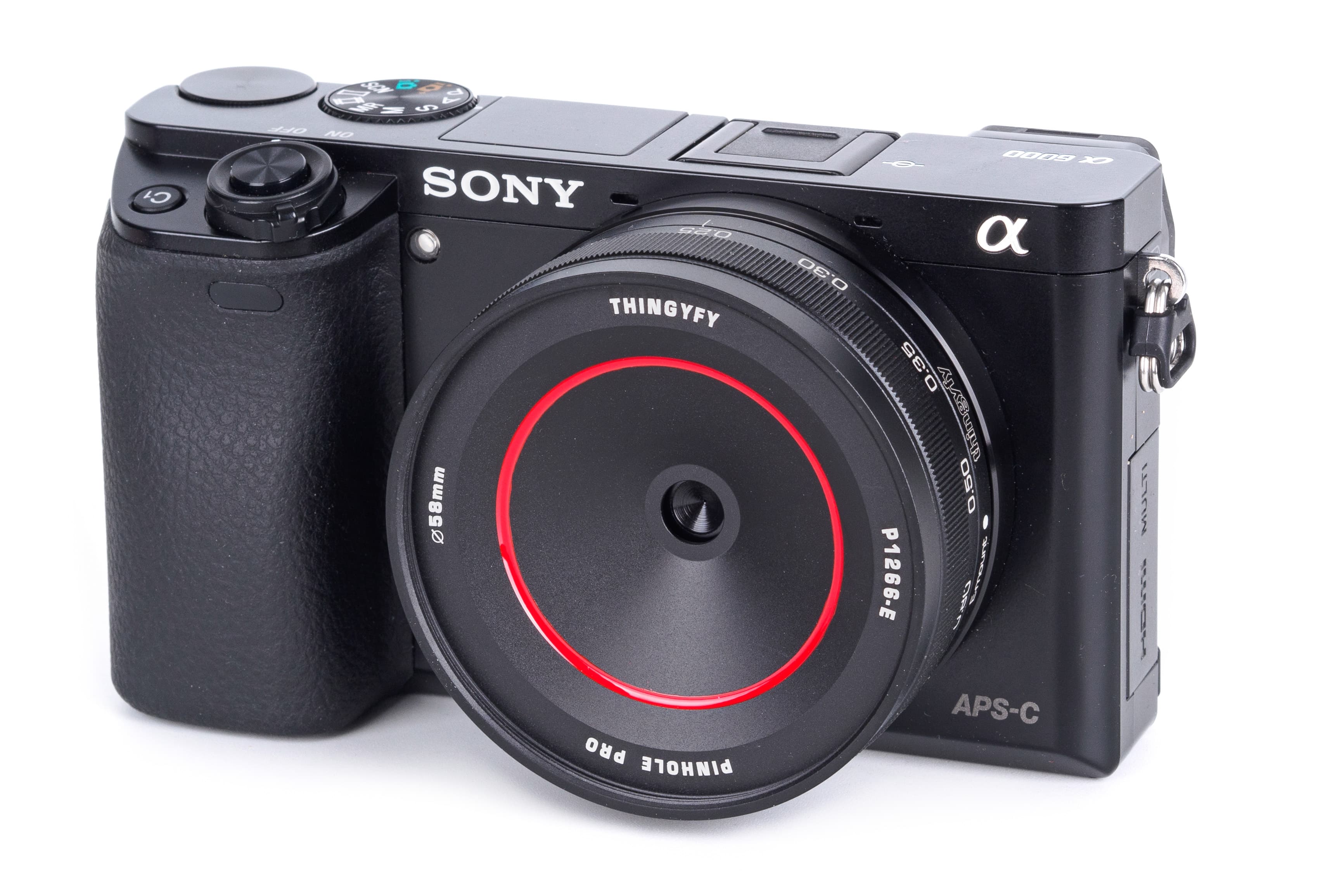Thingyfy Pinhole Pro at a glance:
- Multi-aperture pinhole lens
- Available in most major mounts
- 50mm focal length on DSLRs
- 26mm focal length on mirrorless
- thingyfy.com
This unusual optical device isn’t a lens, but can still be used to take pictures. Pinholes can project an image onto a sensor or film without using any glass, simply because light travels in straight lines. The effective focal length is defined by the distance between the pinhole and the sensor, while the image resolution is determined by their relative sizes.
However, it’s impossible to get truly sharp results because tiny holes become subject to diffraction blurring, while letting in too little light to be practically usable. As a result, pinhole photography tends to be impressionist in nature.
It’s possible to make a simple pinhole lens by punching a hole in a thin sheet of metal, and then fixing it to a body cap that’s had a larger hole drilled in its centre. Theoretically, though, you’ll get the best results from a precision-machined, perfectly circular hole.
With its Pinhole Pro, Thingyfy has gone a step further by providing a choice of eight pinhole diameters, selected using a ring around the barrel. To a first approximation, there are one-stop steps between each, aside from the trio of 0.3mm, 0.25mm and 0.2mm where the difference is more like half a stop. The largest 0.8mm pinhole gives decidedly broad-brush images, and you’ll generally get the sharpest results at about 0.2mm, if that’s what you want.
Thingyfy Pinhole Pro key features:
- Filter thread: The device sports a 58mm thread for attaching filters such as a polarisers.
- Mount: Thingyfy offers the Pinhole Pro in Canon, Nikon, Pentax and Sony A DSLR mounts, and Micro Four Thirds, Fujifilm X, and Sony E mirrorless mounts.
- Aperture ring: This allows click-stopped selection between eight different pinholes ranging from 0.8mm to 0.1mm in diameter.
- Zoom: The effective focal length can be increased by the simple expedient of adding extension tubes.
On a DSLR, the device provides a focal length of 50mm, while the mirrorless version is 26mm. Unfortunately it vignettes on Sony full-frame mirrorless cameras due to its mechanical design, but this can be fixed by inserting a cheap 10mm extension tube, which results in about the same angle of view as on APS-C.
If you use a DSLR you’ll need to engage live view, and if you prefer to shoot at low ISOs, exposure times will be measured in seconds, necessitating the use of a tripod. If on the other hand you have a camera with good high-ISO capabilities and in-body stabilisation, you can often shoot hand-held in daylight.
The Pinhole Pro range
Thingyfy also offers a fixed aperture, wideangle Pinhole Pro S that offers a 37mm focal length on DSLRs, and 11mm on mirrorless, for about £60. In addition, it makes the unique zoom Pinhole Pro X (approx. £102), with the DSLR version providing a 40-60mm range and the mirrorless version, 18-36mm. They can be bought either from its website or via photospecialist.co.uk
Thingyfy Pinhole Pro: Our Verdict
Thanks to its aluminium construction, the Thingyfy Pinhole Pro is a beautifully made device that’s a pleasure to use. Offering a choice of pinholes may appear gimmicky but provides interesting scope for experimentation, not just by finding out which size best suits any particular scene, but also by creatively layering shots taken with different pinholes. It won’t be for everyone, but if you’d like to try taking your photography in a different direction it’s certainly worth a try.










